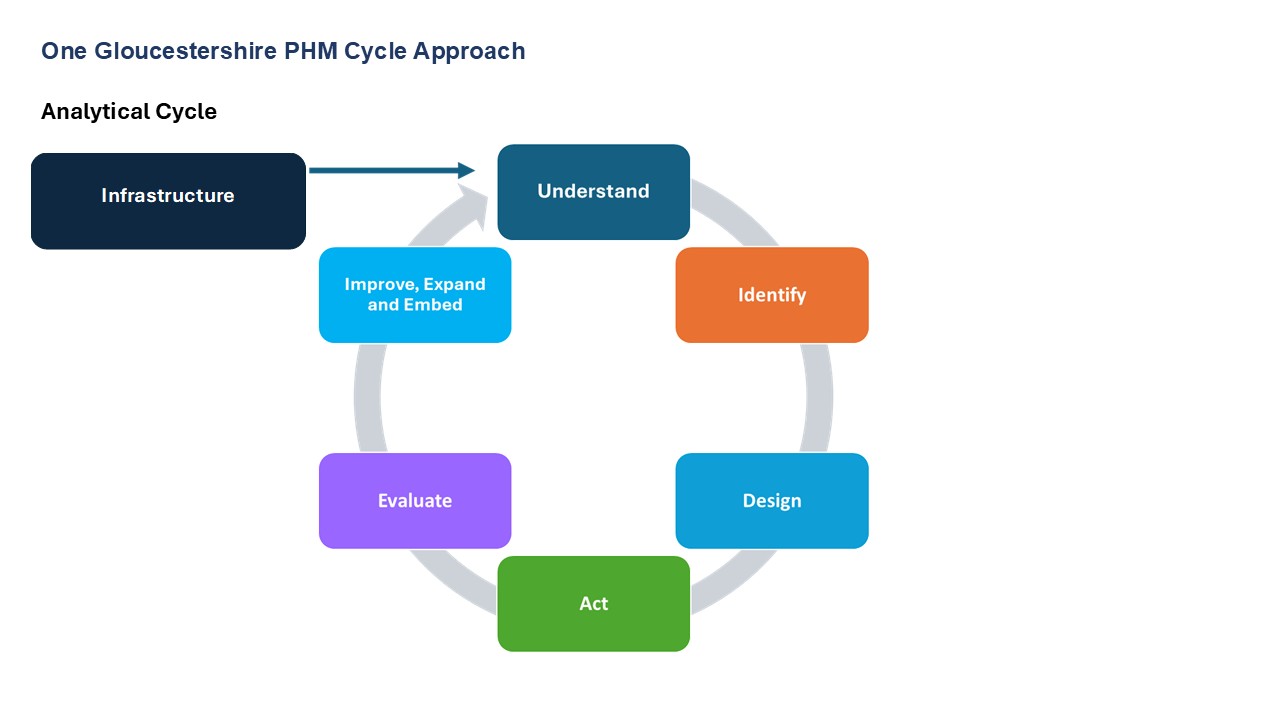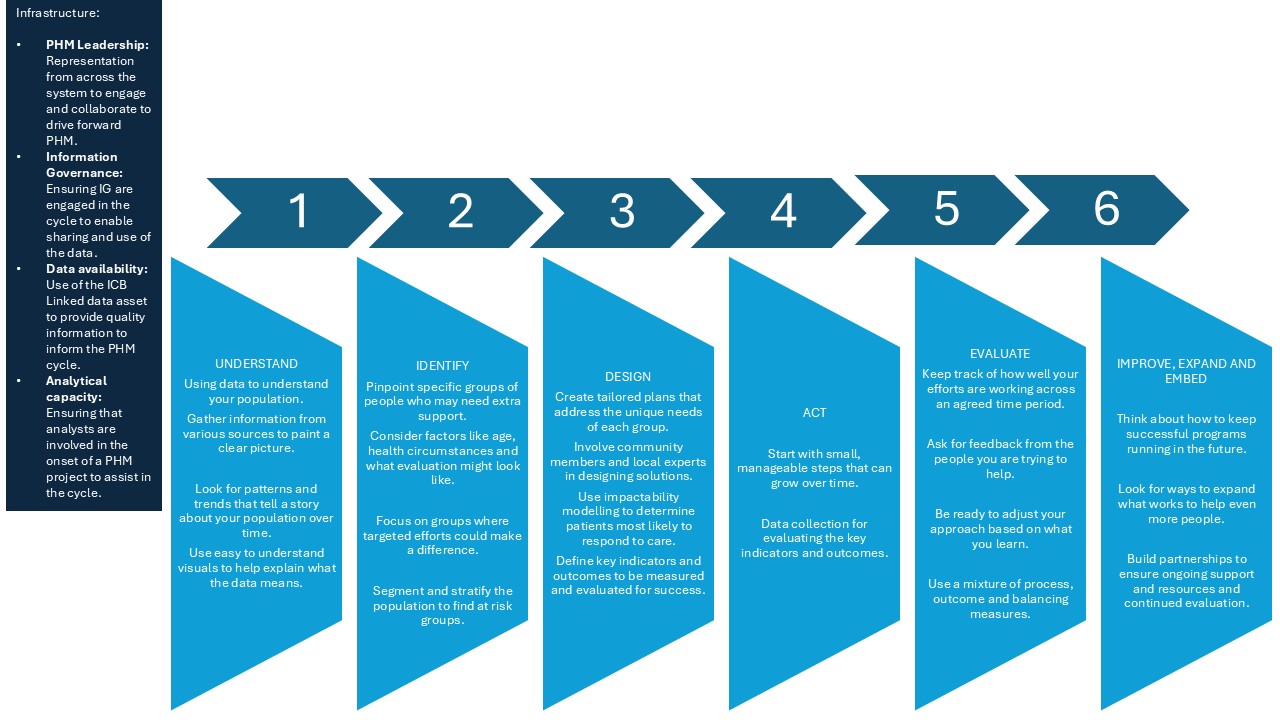In Gloucestershire, we have developed a bespoke offer for PHM support. This offer is driven by Business Intelligence analysts and outlined below.

Infrastructure
PHM Leadership:
We have representation from across One Gloucestershire to engage and collaborate to drive forward PHM.
Information Governance (IG):
We ensure IG are engaged in the cycle to enable sharing and use of the data.
Data availability:
Use of the ICB Linked data asset to provide quality information to inform the PHM cycle.
Analytical capacity:
We ensure that analysts are involved in the onset of a PHM project to assist in the cycle.

Understand
- Using data to understand your population.
- Gather information from various sources to paint a clear picture.
- Look for patterns and trends that tell a story about your population over time.
- Use easy to understand visuals to help explain what the data means.
Identify
- Pinpoint specific groups of people who may need extra support.
- Consider factors like age, health circumstances and what evaluation might look like.
- Focus on groups where targeted efforts could make a difference.
- Segment and stratify the population to find at risk groups.
Design
- Create tailored plans that address the unique needs of each group.
- Involve community members and local experts in designing solutions.
- Use impactability modelling to determine patients most likely to respond to care.
- Define key indicators and outcomes to be measured and evaluated for success.
Act
- Start with small, manageable steps that can grow over time.
- Data collection for evaluating the key indicators and outcomes.
Evaluate
- Keep track of how well your efforts are working across an agreed time period.
- Ask for feedback from the people you are trying to help.
- Be ready to adjust your approach based on what you learn.
- Use a mixture of process, outcome and balancing measures.
Improve, Expand and Embed
- Think about how to keep successful programs running in the future.
- Look for ways to expand what works to help even more people.
- Build partnerships to ensure on-going support and resources and continued evaluation.
